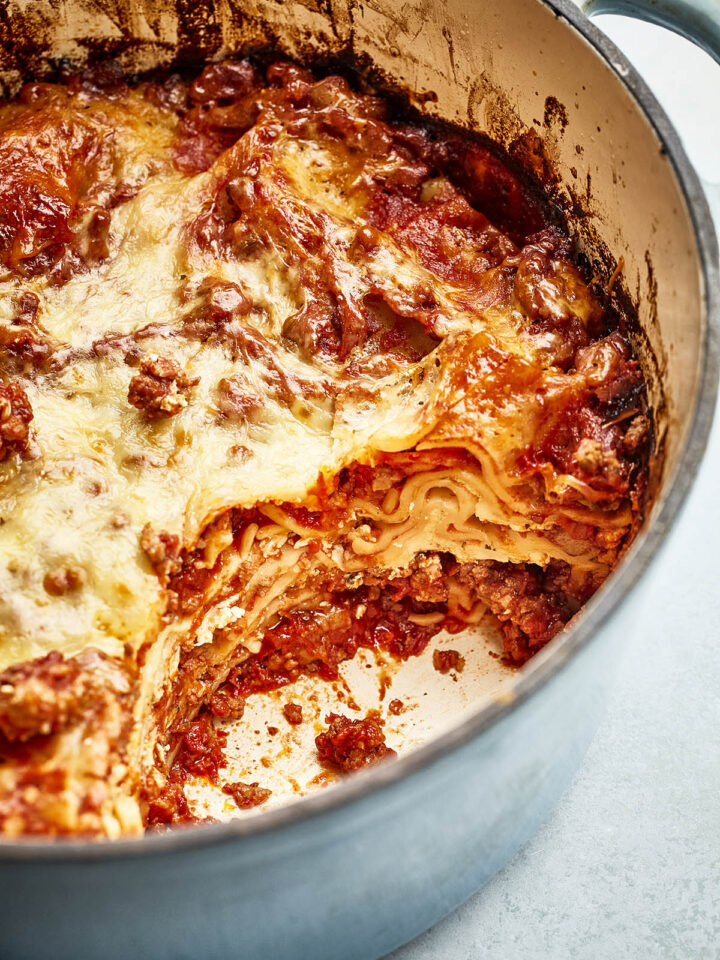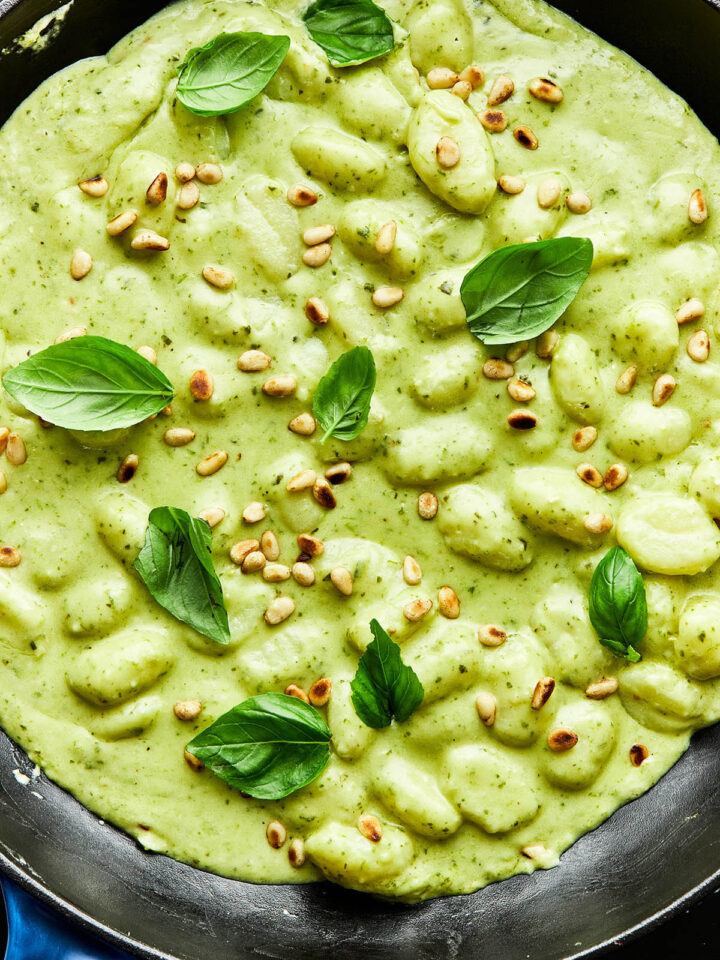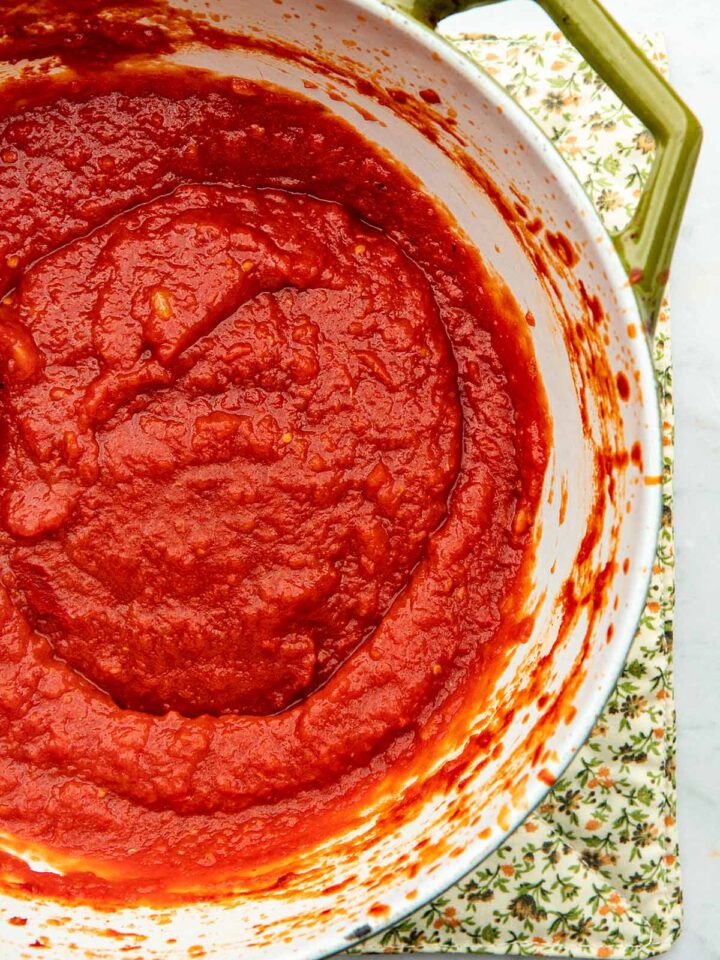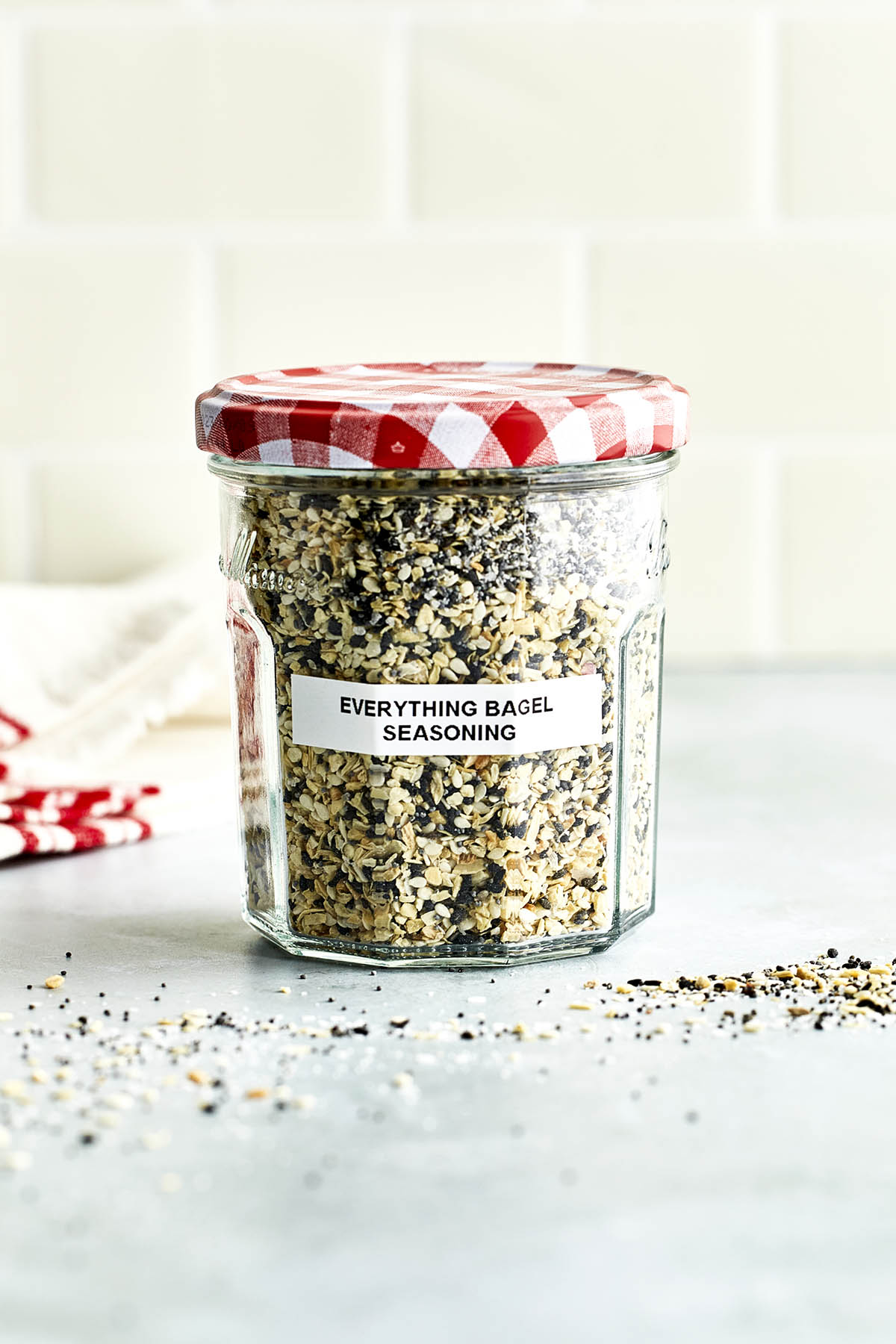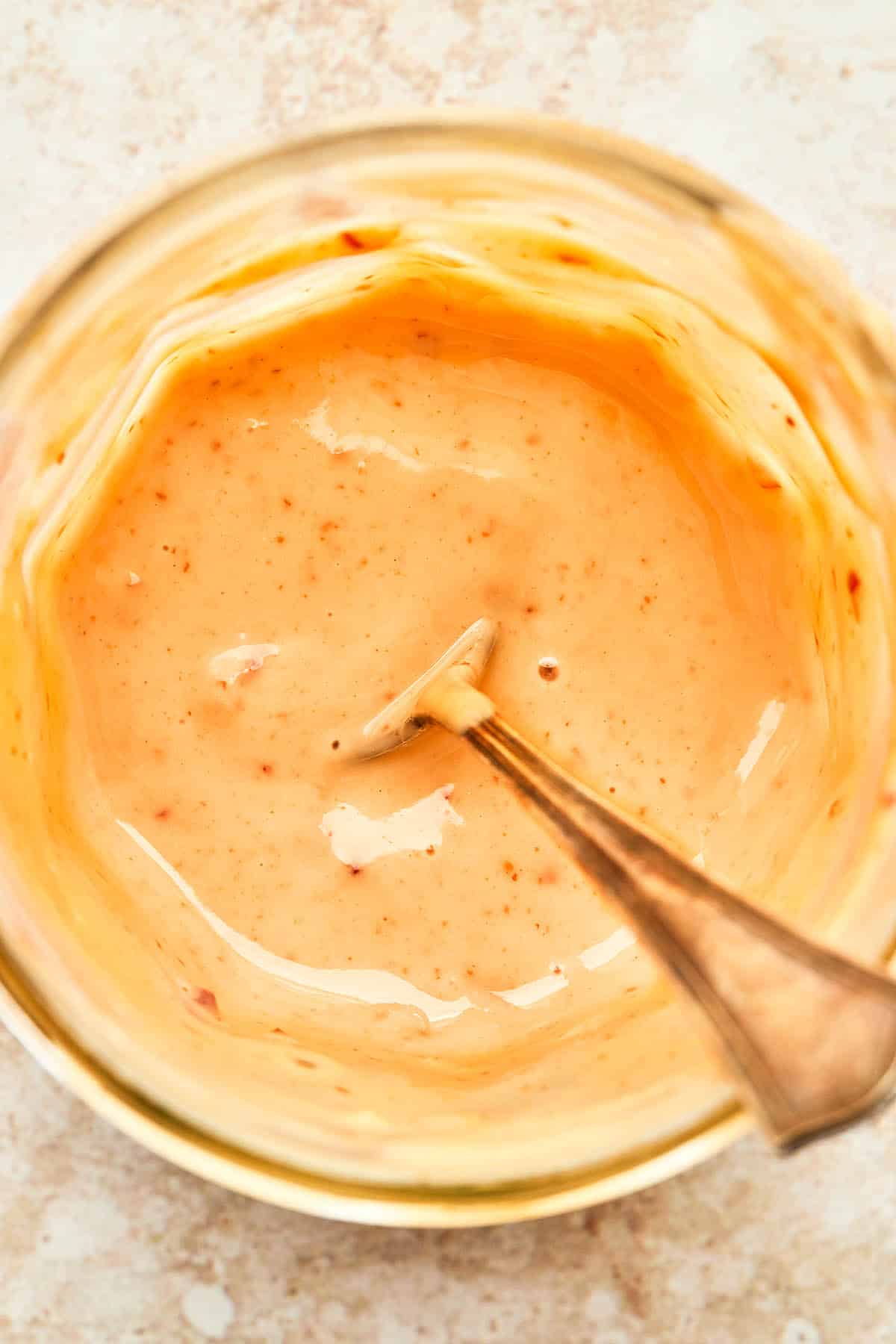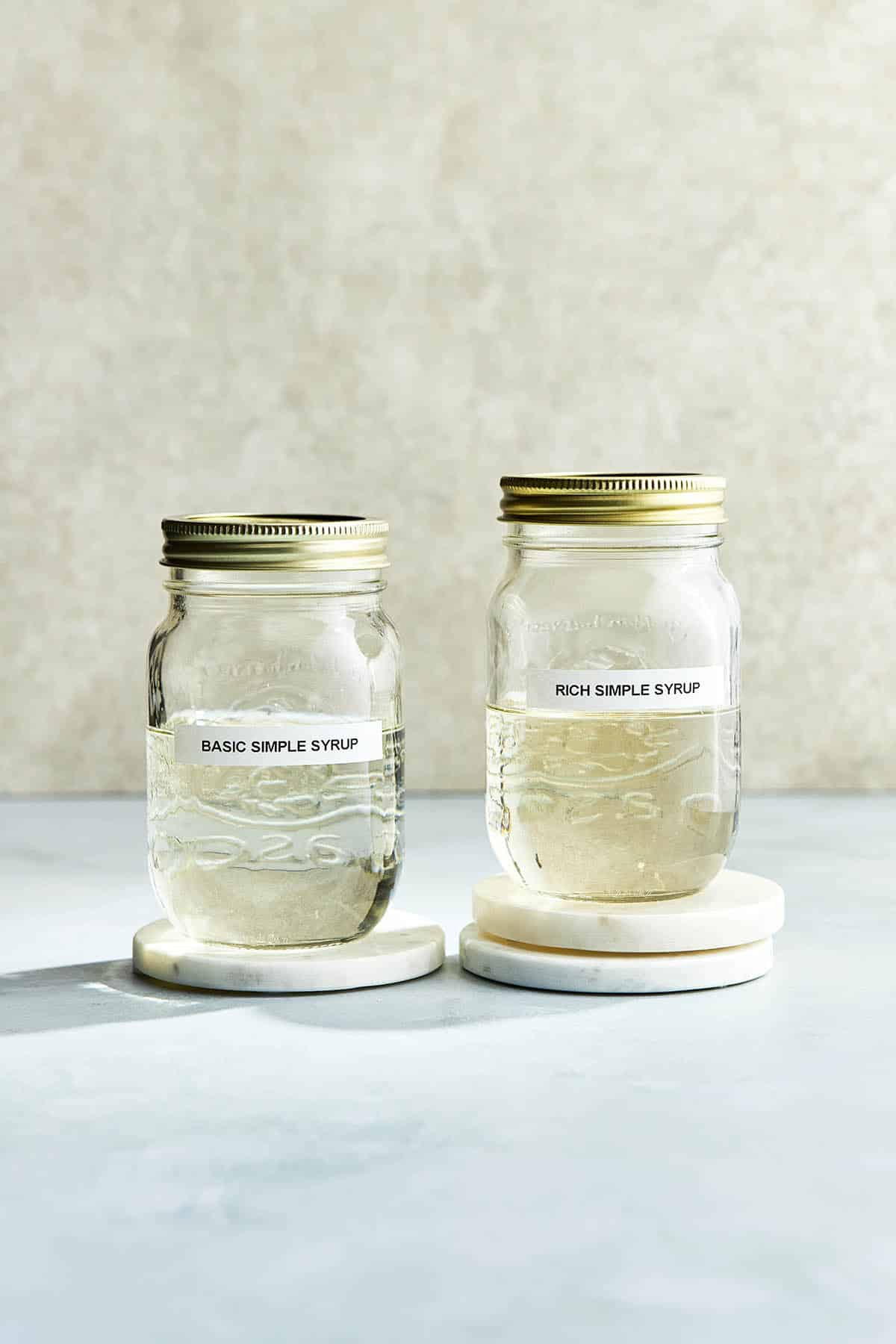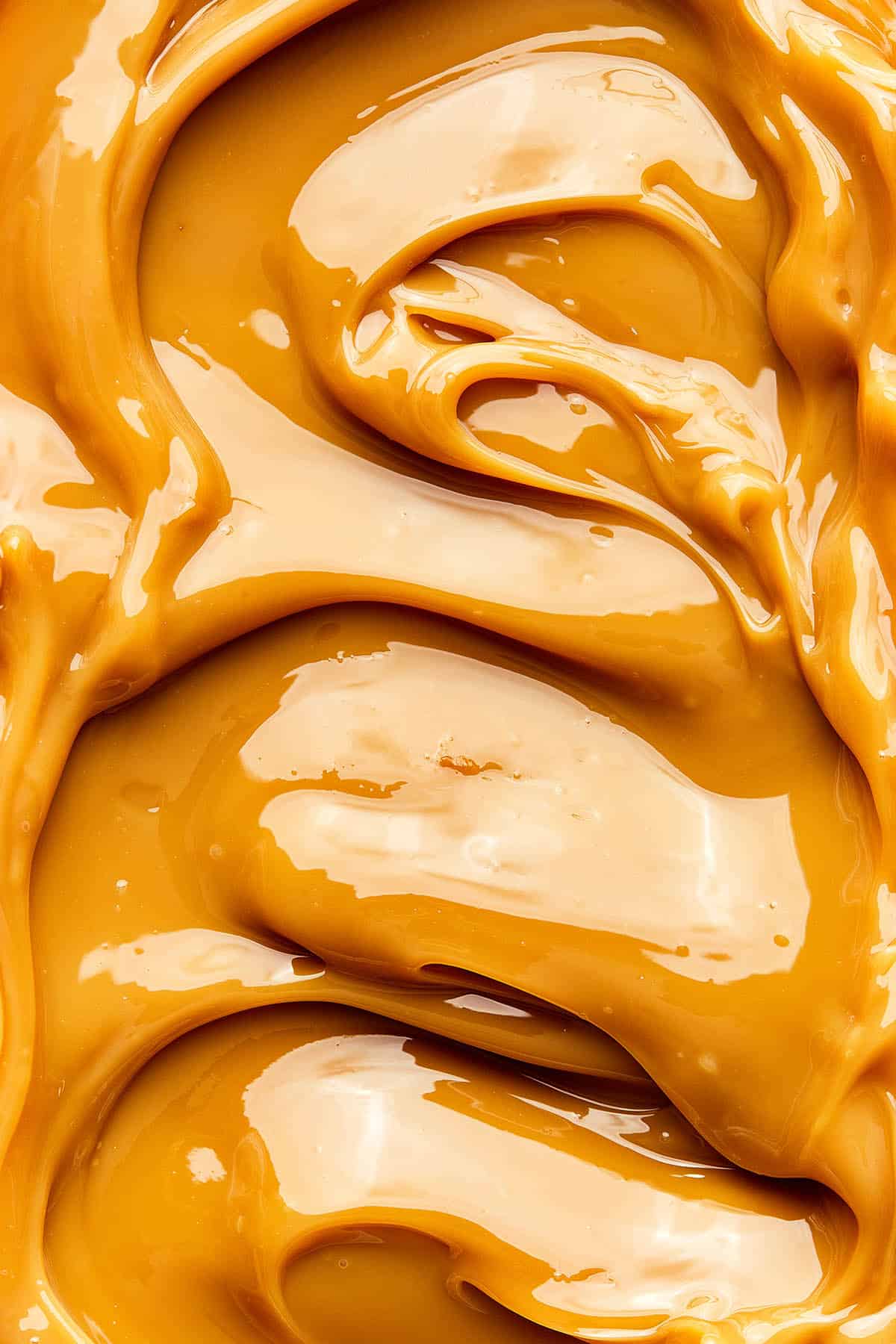Small-Batch Basil Pesto

There are a million recipes for homemade basil pesto out there. Maybe more! But I don’t care because I was making a batch, so why not share the recipe?
I use my immersion blender for this recipe. Why? Mostly because I wanted to use my new large Weck jar. You can also use a food processor. I recommend using a small food processor or one with a smaller bowl attachment if you have one. A good blender will also do the job (and if you’re feeling super ambitious, make it the old-school way by hand using a mortar and pestle).
In most homemade pesto recipes, olive oil is slowly drizzled in as the food processor runs. Not here. I added all of the olive oil at once and blended for about 10 seconds, and the results were terrific. Try adding it to the layers of this Dutch oven lasagna, swirl it into this pesto gnocchi, or use it to amp up the flavor of this simple small-batch tomato sauce.
Jump to:
Why You’ll Love This Recipe
✔️ This sauce is fresh, vibrant, and so flavorful. And so easy to make!
✔️ You can put that sh*t on everything. Try a dollop on your scrambled eggs, add it to pasta or sandwiches, or use it as a dip for meats, veggies, or bread.
✔️ It’s a wonderful way to showcase your summer basil.
Ingredients For Small-Batch Basil Pesto

Ingredient Notes
- Flaky Salt: I generally have Maldon or fleur de sel on hand. Any you like will do.
- Fresh Basil: Basil is an aromatic herb from the mint family, known for its bright, slightly sweet, and peppery flavor. Using the leaves and stems in this recipe maximizes the flavor and reduces waste.
- Olive Oil: Extra-virgin olive oil is traditionally used for its fruity and slightly bitter flavor.
- Parmesan Cheese: Parmesan is an aged, hard Italian cheese that provides a salty, umami flavor and helps bind the pesto together.
- Pine Nuts: These are small, edible seeds from pine trees. They add a nutty, buttery flavor and a rough texture to the pesto; however, they are very expensive.
It’s important to note that when making substitutions in recipes, the texture and flavor may be slightly different. However, these substitutes are the best options for changing the original recipe.
Ingredient Substitutions
- Flaky Salt: Kosher salt is a good substitute for flaky salt.
- Fresh Basil: You can substitute half of the basil with arugula or spinach.
- Olive Oil: Other neutral-tasting oils like avocado or grapeseed oil can be used instead of olive oil, but they may impact the flavor slightly.
- Parmesan Cheese: Pecorino Romano or Grana Padano are good substitutes for Parmesan. You can also use nutritional yeast for a vegan option.
- Pine Nuts: If pine nuts are unavailable or too expensive, you can use other nuts or seeds, such as walnuts, almonds, pistachios, cashews, or pumpkin seeds.
Recipe Variations
Add any of the following ingredients for a twist on this basil pesto recipe:
- Nut-Free Pesto: Substitute the pine nuts with seeds like sunflower or pumpkin seeds for a nut-free version.
- Vegan Pesto: Use nutritional yeast instead of Parmesan cheese and omit the cheese altogether for a vegan pesto.
- Pesto Rosso: Substitute sun-dried tomatoes for some of the basil to make a red pesto variation.
- Herb Variations: Experiment with herb combinations like basil-arugula, basil-mint, or basil-parsley pestos.
- Spicy Pesto: Add crushed red pepper flakes or a diced jalapeño pepper for a spicy kick.
- Citrus Pesto: Incorporate lemon or orange zest for a bright, citrusy flavor.
- Pesto Cream Sauce: Thin out the pesto with heavy cream or milk for a creamy pasta sauce.
- Pesto Vinaigrette: Whisk in some vinegar (like red wine or balsamic) and more olive oil to make a flavorful salad dressing.
- Pesto Spread: Omit some of the olive oil for a thicker consistency to use as a spread on bread or crackers.
- Pesto Crumbs: Mix pesto with breadcrumbs or panko for a flavorful, crunchy topping on baked dishes.
How To Make Small-Batch Basil Pesto

Step 1: Spread the pine nuts on a baking sheet. Place in the oven and toast until lightly golden and fragrant, about 7 to 9 minutes. Set aside to cool.
Step 2: Pulse the basil with an immersion blender in a tall jar until the leaves are halfway shredded.
Step 3: Add the Parmesan cheese, pine nuts, garlic, and flaky salt to the jar—process until coarse and chunky.
Step 4: Add the olive oil to the jar and blend 5 to 10 seconds more. Taste and adjust the seasoning to your liking. Use immediately or store in the refrigerator for later.
Expert Tips
1. Whether you use pinenuts or another seed or nut, don’t skip toasting before making the pesto!
2. For a more mellow garlic flavor, mince the garlic and sautée it in olive oil over medium-low heat until fragrant and soft.
3. Freeze basil pesto in individual portions to be used as needed.
Recipe Notes
- When choosing fresh basil, avoid any wilted or discolored leaves. Rinse and pat dry the leaves before using.
- Avoid pre-grated Parmesan cheese, as it can clump.
- Once the pesto is made, taste it and adjust the salt as needed. The Parmesan cheese adds saltiness; however, you may need to add a little bit more to suit your taste.
Storage
- Pesto will keep in an airtight container in the refrigerator for up to five days. It also freezes well for longer storage.
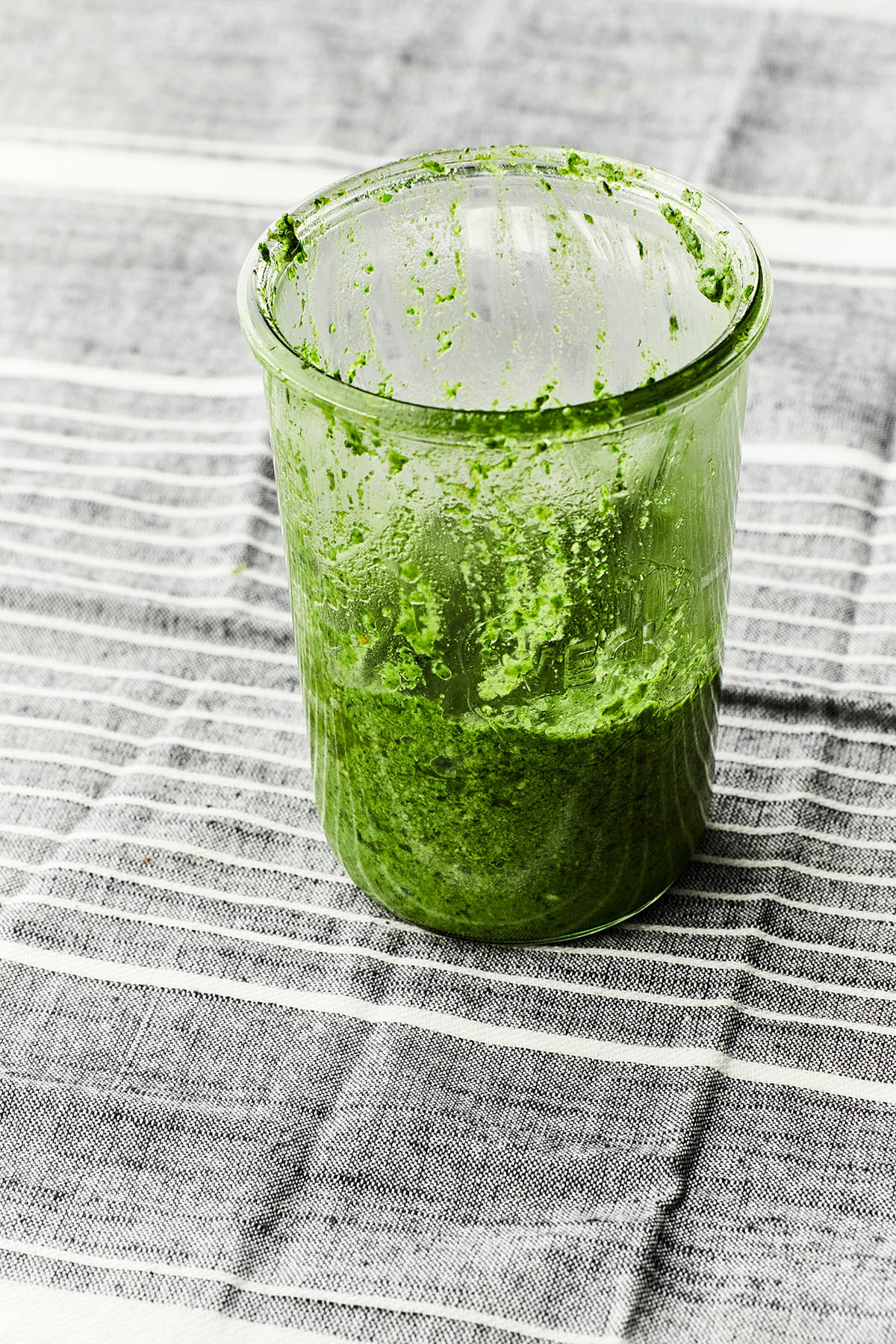
Try Basil Pesto With These Recipes
Did you make this small-batch basil pesto? Please rate the recipe and tell me how it went in the comments below. Also, stay in touch with me on Instagram, Facebook, and Pinterest to see more delicious food and recipes!
Printable Recipe Card
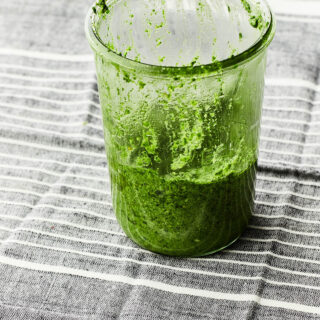
Small-Batch Basil Pesto
Special Equipment
- Baking sheet
- Large, skinny, tall jar
- Immersion blender if not using a regular blender
- Glass jar with lid for storage optional
Ingredients
- ¾ cup pine nuts
- 6 cups fresh basil , leaves and stems
- 1 cup Parmesan cheese, finely grated
- ¼ teaspoon flaky salt, and perhaps more to taste
- 1 small garlic clove, end trimmed, peeled
- ⅓ cup olive oil
Instructions
- Preheat the oven to 350ºF (180ºC). Line a baking sheet with parchment paper and spread the pine nuts out into an even layer. Place the pine nuts in the preheated oven and toast them until they are light gold and fragrant, about 7 to 9 minutes. Shake the pan halfway through toasting. Set aside to cool.
- Tear the basil leaves and stems and place them inside a large tall jar, food processor, or blender. (if using a jar and a handheld immersion blender you may need to do this in a few batches as the basil may not fit all at once). Pulse the basil a few times to start breaking down the leaves.
- Add the toasted pine nuts, grated Parmesan cheese, garlic clove, and ¼ teaspoon of flaky salt to the jar. Process everything together until the mixture is coarse and chunky.
- Add the olive oil and blend the pesto for 5 to 10 seconds more. Taste and adjust the seasoning and/or add more salt to your liking. Spoon the pesto into a small clean jar and store it in the fridge, sealed with an airtight lid, for up to one week.
Recipe Notes
- When choosing fresh basil, avoid any wilted or discolored leaves. Rinse and pat dry the leaves before using.
- Avoid pre-grated Parmesan cheese, as it can clump.
- Once the pesto is made, taste it and adjust the salt as needed. The Parmesan cheese adds saltiness; however, you may need to add a little bit more to suit your taste.
Storage
- Pesto will keep in an airtight container in the refrigerator for up to five days. It also freezes well for longer storage.

